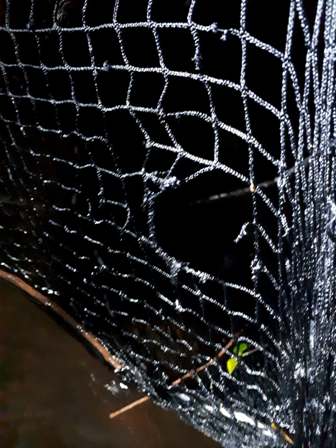Many of us are intrigued and delighted by seeing platypus in the wild. Sadly, current research indicates that platypus numbers in the greater Brisbane area are in sharp decline.
Tamielle Blunt is a renowned ecologist who specialises in studying platypus populations in south-east Queensland. Tamielle is working to understand why the distribution of platypus in our region is diminishing so rapidly. As well as leading platypus counts for the MCCG and across the region, Tamielle also performs “catch-and-release” surveys to support her research.
Rebecca Bain is an MCCG member and talented photographer who has a passion for wildlife. Like Tamielle, Beck is intrigued by platypus and religiously attends our annual surveys. So for Beck, it was a match made in heaven when Tamielle invited her along to a trapping night.
Beck has shared this unique experience. We hope you enjoy this very entertaining read!
I have crossed paths with Tamielle several times over the last few years thanks to our shared interest in platypuses, amongst other wildlife interests. I finally got a chance to assist her (in a volunteer capacity) at one of her trapping nights in July and it was a great experience.
We began around lunchtime, with the plan to set up fyke nets at between 4 to 8 sites within the Kenmore/Kenmore Hills area of the Moggill Creek Catchment.
As we arrived at our first site I got to change into a pair of waders and, armed with our nets (plus wooden stakes and a mallet to anchor the nets down) we then proceeded to trek about 100 metres to our first sight.
It’s a strange sensation walking into a creek for the first time – you’re relieved to find that the waders do their job and keep you dry, while at the same time you feel the coldness of the water through the fabric.
Tamielle found an ideal spot that allowed 2 nets (one upstream and one downstream) to be set up in a spot in the creek no wider than 10 metres (the length of the nets) and no deeper than 1 metre. We then had to search for suitably-sized rocks (which often meant plunging your arm into the cold water) to place along the base of the nets (once again plunging your arm/s into cold water) to prevent any platypuses from swimming underneath.
With the first site set up, we proceeded to the second site. This site, however, ended up being unsuitable. Tamielle had scouted for locations a few weeks earlier but sometimes areas can become too shallow due to lack of rain, and unfortunately the surrounding areas of this shallow site were either too wide (>10 m) or had a deep channel running through.
We ended up with 4 sites in total, that we would monitor throughout the night/early morning. We conducted checks at 7pm, 11pm (snuck in a few hours sleep from 12.45am to 4.00am) and 4.30am. Our checks consisted not only of looking for trapped platypuses but also checking for other species that may have found themselves trapped, as well as repairing any damaged nets.
Unfortunately, the only mammals we found throughout the night were Red-necked Wallabies, Brushtail and Ringtail Possums… We did liberate 2 Eel-tailed Catfish from the nets, and two native water rats liberated themselves from nets before we got the chance to. The little buggers chewed through the net once caught, leaving us with net repairs to carry out by the light of our head torches – check out the picture below!

While it was disappointing to have not caught a single platypus for all our efforts, I enjoyed being out in the field and seeing for myself how the process works.
I’ll just have to hope that next time (yep, I’m going to wander around in creeks in the middle of winter at all hours of the night, again) I’ll be lucky enough to help catch at least one of these so far elusive platypuses.

